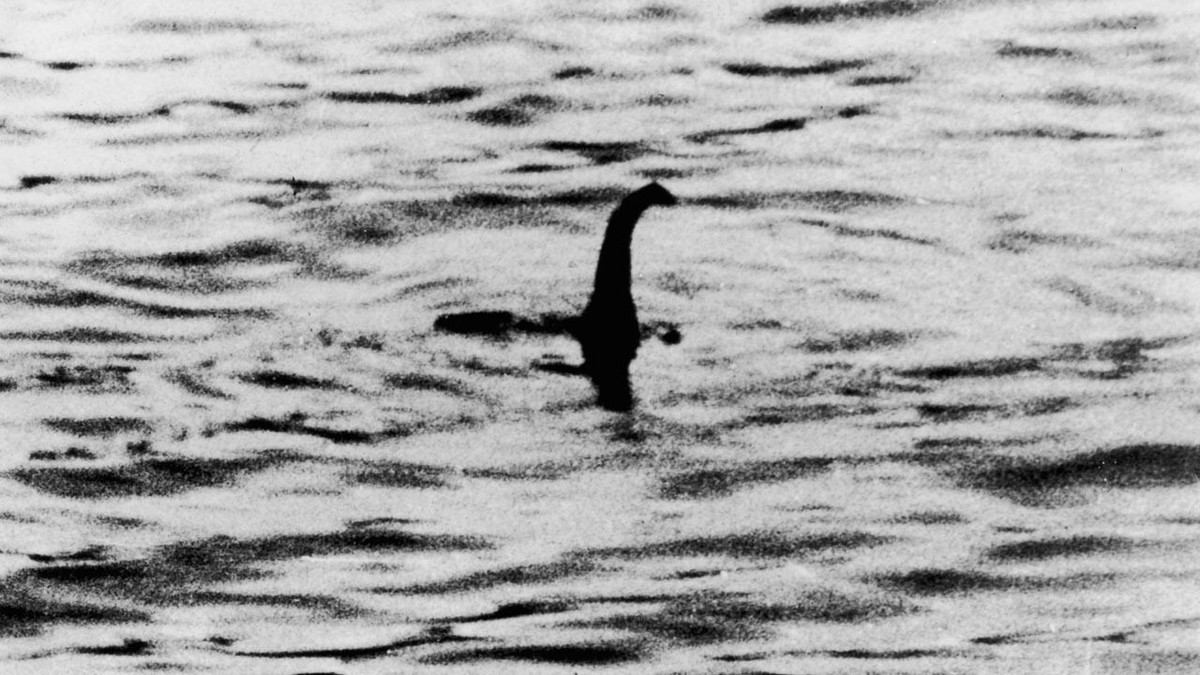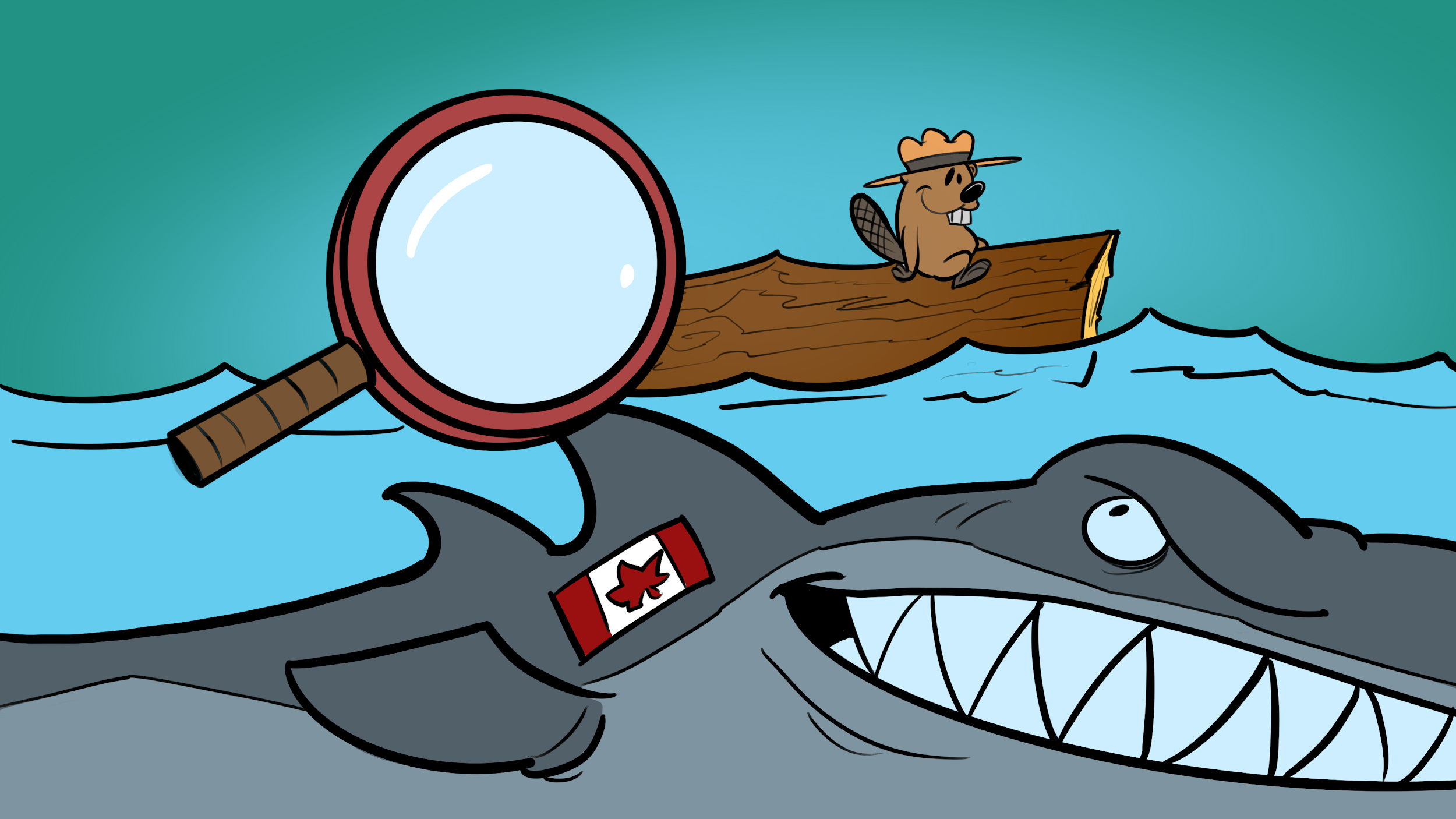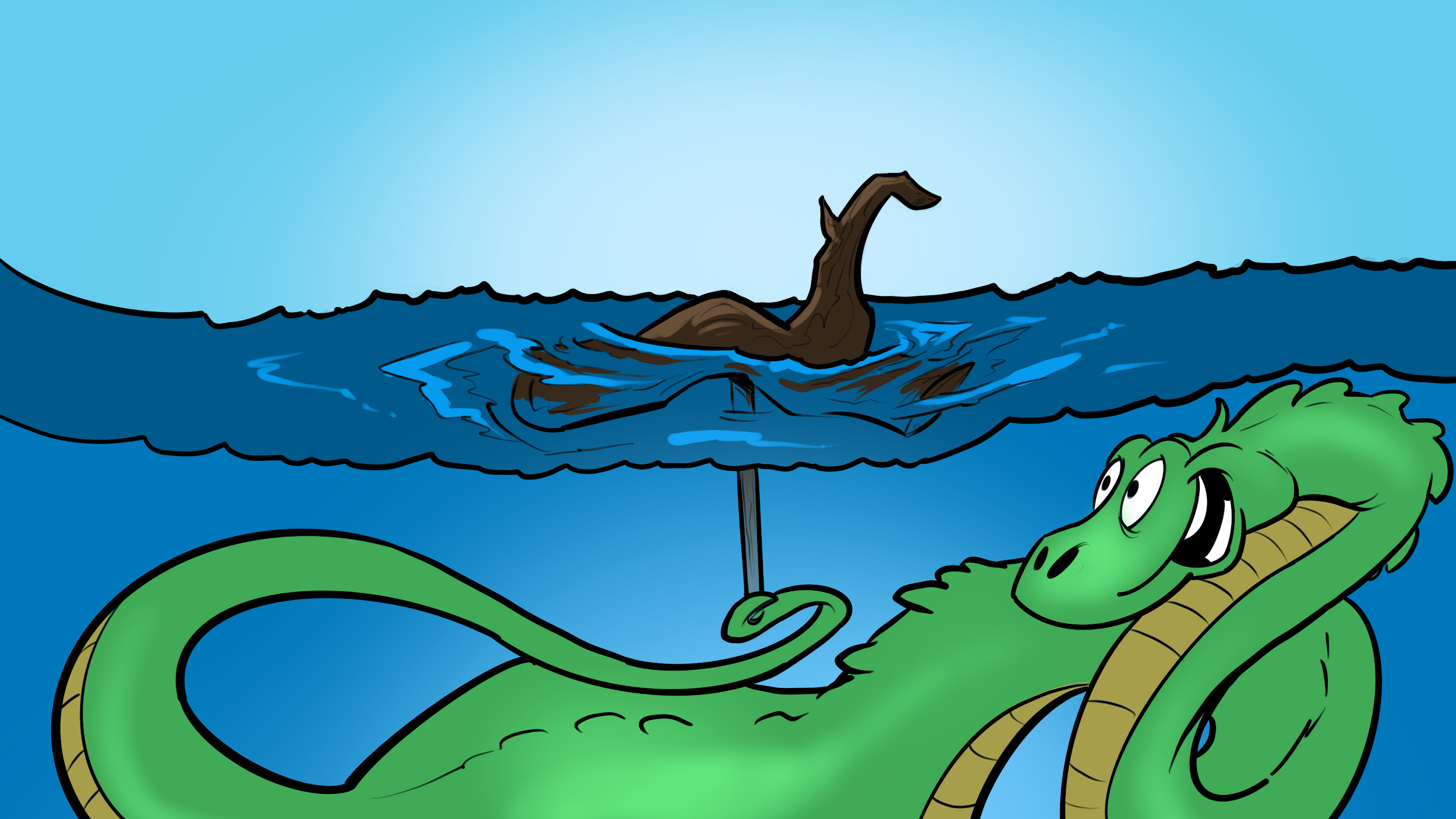Summary
Swimming in your local lake, you feel what you think is seaweed. But is it? When there's something strange in your local habitat, who ya gonna call? Mulder & Scully! In this third lesson of the Monster Monday series, students examine informational texts for examples to model and craft their own informative writing rules. After diving deep into the research surrounding these creatures, students write their own informational pieces on the Oklahoma Octopus to set the record straight about what's strange versus what's just seaweed.
Essential Question(s)
How do authors use similar tropes but come up with different variations of the same character?
Snapshot
Engage
Students participate in a Caption This activity with an image of the Loch Ness Monster and view a clip from the movie Napoleon Dynamite.
Explore
Students review examples and non-examples of writings on Ogopogo and the Loch Ness Monster.
Explain
Students create a list of rules and expectations for informative writing.
Extend
Students write a short informative piece on the Oklahoma Octopus.
Evaluate
Students peer review classmates’ writing pieces.
Materials
Lesson Slides (attached)
Ogopogo Informative Writing Sample (attached; one per student)
Nessie Informative Writing Sample (attached; one per student)
Paired Text H-Chart (attached; one per student)
Links to three interactive activities:
Informative Writing Checklist (attached; one per student)
Wakelet (linked)
Student Devices
Internet Access
Engage
Begin the lesson with the title slide on the attached Lesson Slides.
Display slide 2 and share the instructional strategy Caption This with your students. Share the image on the screen and instruct them to write a caption based on observations and inferences.

Move to slide 3 and share the 48-second clip “Napoleon Dynamite - Nessie” in which Napoleon reports on Japanese scientists and Scottish wizards seeking a connection with “our underwater ally.” (Note that this slide and video are optional and can be skipped to save time.)
Move to slides 4–5 to share the lesson’s essential question and learning objectives to the extent you feel necessary.
Move to slide 6 and review the definition of “trope”:
A recurring theme or motif, as in literature or art: The heroic trope.
A convention or device that establishes a predictable or stereotypical representation of a character, setting, or scenario in a creative work: From her introduction in the movie, the character is nothing but a Damsel in Distress trope.
If you have taught Monster Monday: The Good, The Bad, and The Sparkly and/or Monster Monday: Puppy Love, then your students should have a good understanding of the term already.
Ask students about water creatures and sea monsters as tropes in stories and tales. To start a discussion, consider the following guiding questions:
What kinds of different water creatures have you seen in movies?
What other water creatures do you know of?
Explore
Display slide 7 and share the goal for the upcoming activity: “Your goal in this activity is to identify the requirements for informative writing through exploration, observation, and analysis.”
Move to slide 8 and share the instructional strategy Paired Texts H-Chart with your students. Pass out a copy each of the attached Paired Text H-Chart handout, Ogopogo Informative Writing Sample, and Nessie Informative Writing Sample to each student.
Share the first interactive activity on slide 9 with your students: https://k20center.ou.edu/e-learning/monster-monday/?scene=canada. Have students use their devices to move the magnifying glass around the illustration. Once they have had sufficient time to explore the activity, move to slide 10. Have students read the Ogopogo Informative Writing Sample, considering the questions on the slide as they read:
Does this writing give you enough information to understand what was happening in the image?
What do you notice about the writing?
What questions do you have?
As they read, students should take notes in the right column of the H-Chart on the structure of the writing and important things that stand out to them.
Once they have finished, instruct students to share their observations with a partner.
Move to slide 11 to show the full hidden image from the interactive activity.

Move to slide 12 and ask students to reflect on the following questions:
Did the writing help you make sense of the second picture?
Do you have a good understanding of what was happening as you moved the magnifying glass around?
As they read, students should keep taking notes in the right column of the H-Chart.
Share the next interactive activity on slide 13 with your students: https://k20center.ou.edu/e-learning/monster-monday. Have students use their devices to move the magnifying glass around the illustration. Once they have had sufficient time to explore, move to slide 14. Have students read the Nessie Informative Writing Sample, considering the questions on the slide as they read:
Does this writing give you enough information to understand what was happening in the image?
What do you notice about the writing?
What questions do you have?
As they read, students should take notes in the left column of the H-Chart on the structure of the writing and important things that stand out to them.
Once they have finished, instruct students to share their observations with a partner.
Move to slide 15 to show the full hidden image from the interactive activity.

Move to slide 16 and ask students to reflect on the following questions:
Did the writing help you make sense of the second picture?
Do you have a good understanding of what was happening as you moved the magnifying glass around?
As they read, students should keep taking notes in the left column of the H-Chart.
Display slide 17 and instruct your students to synthesize what they noticed between the two texts. Use the following questions to help guide this synthesis:
How are the writing samples similar or different?
What does one have that the other doesn’t?
What makes one an exemplary essay?
Move to slide 18 and have your students review everything they have written down. Instruct your students to flip their H-Charts over and make a list of what requirements and steps they believe are necessary for good informative writing based on what they observed.
Display slide 19 and instruct each students to review their list with a partner, adding new ideas from their partner’s list to their own.
Explain
Display slide 20. Share the instructional strategy Tell Me Everything with your students. Have them share what they wrote on the back of their H-Chart. As they are sharing out, record their responses on a sheet of paper.
Extend
Display slide 34 and inform your students that they will be independently researching Oklahoma’s own water cryptid, the Oklahoma Octopus. Pass out the attached Informative Writing Checklist and take some time to review it with your students.
Move to slide 35 and share the Mind Maps instructional strategy with your students. Have students scan the QR code on the slide or distribute the link to the Wakelet activity: The Nessie Details (https://wakelet.com/wake/0FZDXjsGqOzKM-2pbKcXO).
Move to slide 36 to show students an example of a Mind Map. This Mind Map should look familiar to students because it was used to help research the exemplary Nessie writing sample.
Before your students begin their research and writing, share the image on slide 37 along with a link to the interactive illustration: https://k20center.ou.edu/e-learning/monster-monday/?scene=oklahoma. Remind your students that you are looking for them to share more than just surface information.
Give your students enough class time to research and write their informative essays about the Oklahoma Octopus.
Evaluate
Display slide 38 and instruct your students to partner up. Ask each pair to use the Informative Writing Checklist to peer review their partner’s writing. As students are taking notes on the checklist, encourage them to be specific—this will help them and their partner strengthen their skills.
Move to slide 39, which shows the full hidden image from the last interactive activity. Have students trade checklists with their partners. Invite students to review their partners’ notes and feedback. Have students reflect on their work with the question, “does my writing go deeper than the surface level of this topic to show the real story?”
Give students class time to revise their writing. Once they have done so, collect students’ finished informative essays.
Resources
Andrew. (2013, April 21). How to write a thesis for beginners [Video]. YouTube. https://www.youtube.com/watch?v=wCzuAMVmIZ8
K20 Center. (n.d.). A-CLAP. Strategies. https://learn.k20center.ou.edu/strategy/183
K20 Center. (n.d.). Caption this. Strategies. https://learn.k20center.ou.edu/strategy/82
K20 Center. (n.d.). Examples and Non-Examples. Strategies. Retrieved from https://learn.k20center.ou.edu/strategy/163
K20 Center. (n.d.). Lucid. Tech tool. Retrieved from https://learn.k20center.ou.edu/tech-tool/2856
K20 Center. (n.d.). Mind maps. Strategies. Retrieved from https://learn.k20center.ou.edu/strategy/1277
K20 Center. (n.d.). Making sense of MLA. Lessons. Retrieved from https://learn.k20center.ou.edu/lesson/2138
K20 Center. (n.d.). Mind maps with Lucid. Tech integrated strategy. Retrieved from https://learn.k20center.ou.edu/tech-strategy/2959
K20 Center. (n.d.). Monster monday: puppy love. Lessons. Retrieved from https://learn.k20center.ou.edu/lesson/2799
K20 Center. (n.d.). Monster monday: the good, the bad, and the sparkly. Lessons. Retrieved from https://learn.k20center.ou.edu/lesson/2613
K20 Center. (n.d.). Paired texts h-chart. Strategies. Retrieved fro
K20 Center. (n.d.). Tell me everything. Strategies. Retrieved from https://learn.k20center.ou.edu/strategy/107
K20 Center. (n.d.). Wakelet. Tech tools. https://learn.k20center.ou.edu/tech-tool/2180
Napoleon Dynamite - Nessie. (2017). YouTube. Retrieved July 4, 2023, from https://www.youtube.com/watch?v=93CIrSkeoCg
Tulsaccprof. (2012, Dec. 17). Writing an effective thesis statement [Video]. YouTube. https://www.youtube.com/watch?v=4sx42_C10zw
Wetherell, M. A. “Duke.” (2019). The Loch Ness Monster. Wikimedia Commons. Retrieved July 4, 2023, from https://commons.wikimedia.org/wiki/File:Loch_Ness_Monster-1.jpg


